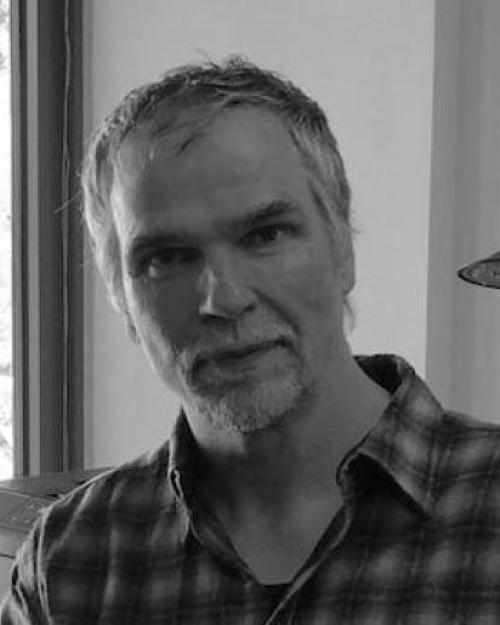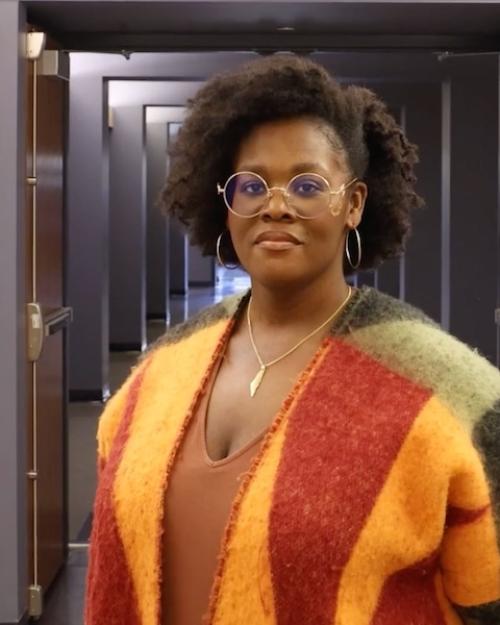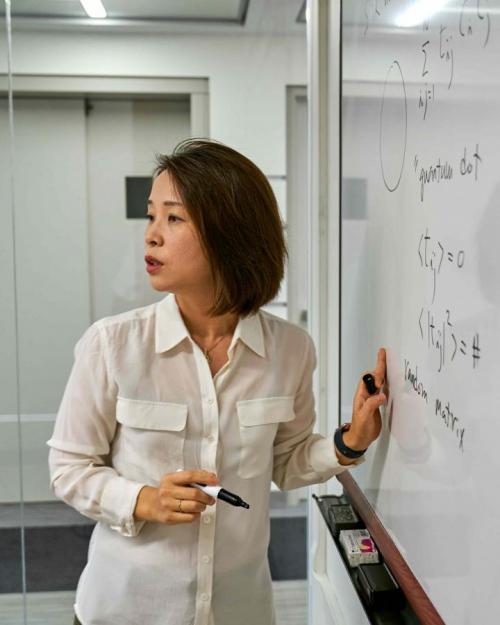Physicist Eun-Ah Kim studies society – electron society. Her specialty is quantum condensed matter physics, which deals with particles the size of atoms or smaller.
By harnessing the power of machine learning to analyze data produced by experiments into electron behavior, Eun-Ah Kim, professor of physics in the College of Arts and Sciences (A&S), together with collaborators in A&S, the College of Engineering and the Cornell Ann S. Bowers College of Computing and Information Science, is leading the way toward applications of quantum mechanics, including the discovery of new quantum materials and the development of quantum computing.
Kim recently received an $800,000 grant from the Gordon and Betty Moore Foundation for a project titled “Accelerating Machine-Learning-Driven Discovery in Quantum Materials.” With the Foundation support, Kim will build on her work in developing machine learning tools to solve problems in quantum computing related to qubits, originally supported by a grant from the philanthropically funded New Frontier Grant program in A&S. Kim’s grant was funded by Justice Miriam Shearing '56.
The complicated characteristics of electrons that make them difficult to understand also make them powerful in developing valuable materials and computing tools – the way each has an inherent spin, for example, or the way two or more electrons can share a seemingly telepathic “entangled” bond. But experiments into these and other qualities of quantum materials produce particularly difficult data sets.
“Data problems can arise in two forms, one in the form of volume, the other in the form of complexity,” said Kim. Machine learning, she said, can help with both problems.
On the high-volume front, Kim analyzed 10 terabytes of data on strongly correlated quantum matter (SCQM), produced by the Cornell High-Energy Synchrotron Source (CHESS) and Argonne National Lab in a recent project with Kilian Q. Weinberger, associate professor of computer science.
“The volume of information in the entire Library of Congress is about 20 terabytes,” Kim said. “In this experiment, we worked with 10 terabytes of data from a tiny piece of material.”
Kim has also developed machine learning solutions for particularly complex data sets. In a recent collaboration, Kim and doctoral student Michael Matty produced a machine-learning algorithm that could analyze data from an experiment by Brad Ramshaw, the Dick & Dale Reis Johnson Assistant Professor of physics (A&S) that chilled the quantum material uranium ruthenium silicide (URu2Si2) to 17.5 kelvin (minus 256 degrees Celsius). Data from this experiment was not especially large in volume, but was difficult to analyze.
“Uranium ruthenium silicide has puzzling behavior,” Kim said. “It looks like something is happening, but we can’t tell quite what is happening. That’s called ‘hidden order.’ It was hard to interpret; that’s where we used machine learning.”
The analysis by Kim and Matty uncovered underlying patterns in the data. This allowed the team to eliminate about half of the more than 20 explanations for the material’s hidden order. Moreover, it proved that machine learning can be a useful approach to difficult data analysis problems in experimental physics.
Machine learning is also changing Kim’s approach to the field of quantum computing. She and collaborators are using machine learning to gain understanding into the quantum storage unit called a qubit.
“One of the promising aspects of quantum computing is that you can handle a much larger volume of information when you use qubits,” Kim said.
A qubit has the potential to encode exponentially more information than a bit, the classical computing storage unit, in the way a ball has infinitely many more positions on its surface than a two-pole bar magnet, Kim said.
There are several different ways of engineering qubits, Kim said. One existing platform uses the electron’s spin – its inherent angular momentum. Others, including developments by IBM and Google, use a superconducting-based qubit.
No matter what the method of engineering, Kim said, retrieving information that’s been encoded in qubits proves difficult: “Although there is a tantalizing possibility of being able to encode a lot of information, reading it out is a non-trivial process with qubits.”
In a June 2021 paper in Nature Communication, Kim and Weinberger, together with Harvard University researchers, show the enormous number of possibilities a set number of qubits present for information storage. They’ve developed a machine learning tool to parse quantum matter and make crucial distinctions in the data – an approach that will help future explorations into subatomic phenomena.
“The information that can be encoded in 169 qubits is 2 to the power of 169. That’s larger than the number of stars in the observable universe, by far,” Kim said. “This paper exemplifies how we can use machine learning to understand a state of many qubits.”
Even with all these recent and future developments, quantum computing is at the seedling stage, Kim said. In the same way that the first inventors of classical computing could not imagine the iPhone, researchers working on quantum condensed matter physics can’t imagine what applications might lead to, she said.
With Greg Fuchs, associate professor of applied and engineering physics (Engineering), and Alumni Affairs & Development, Kim has shaped a vision for an institute in quantum information at Cornell to boost innovation on quantum information and technology. Kim, Fuchs and their colleagues in A&S and Engineering envision a cross-college institute that unites three focus areas – quantum theory, quantum experiment and quantum technology.
“I think where we are right now is like having seen that seed sprouted. And now we are starting to see a few of its first leaves,” Kim said. “For quantum computing to contribute to science and society, it is important that people with different expertise come together. That’s why we need an institute.”
Read this story in the Cornell Chronicle.





